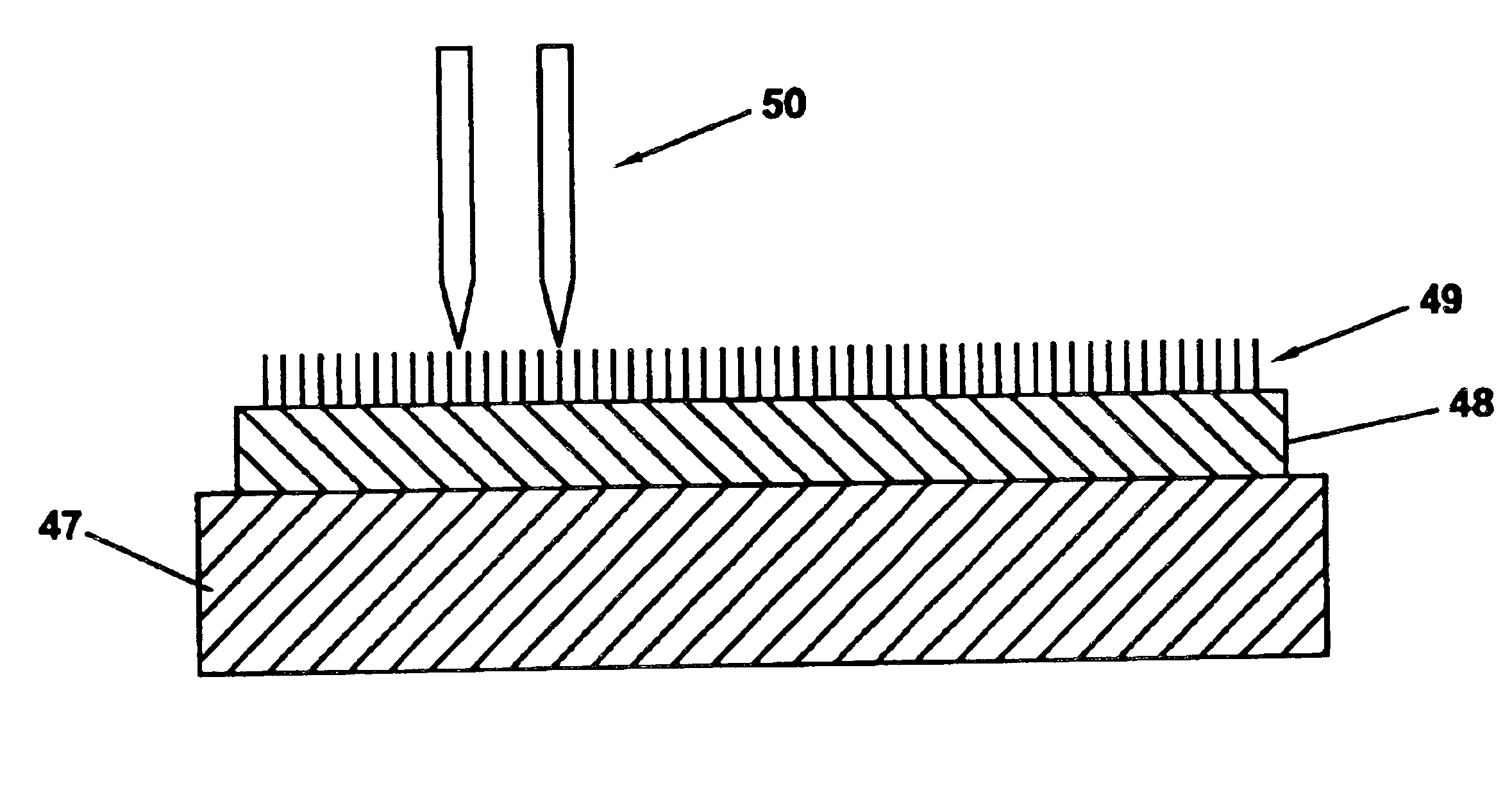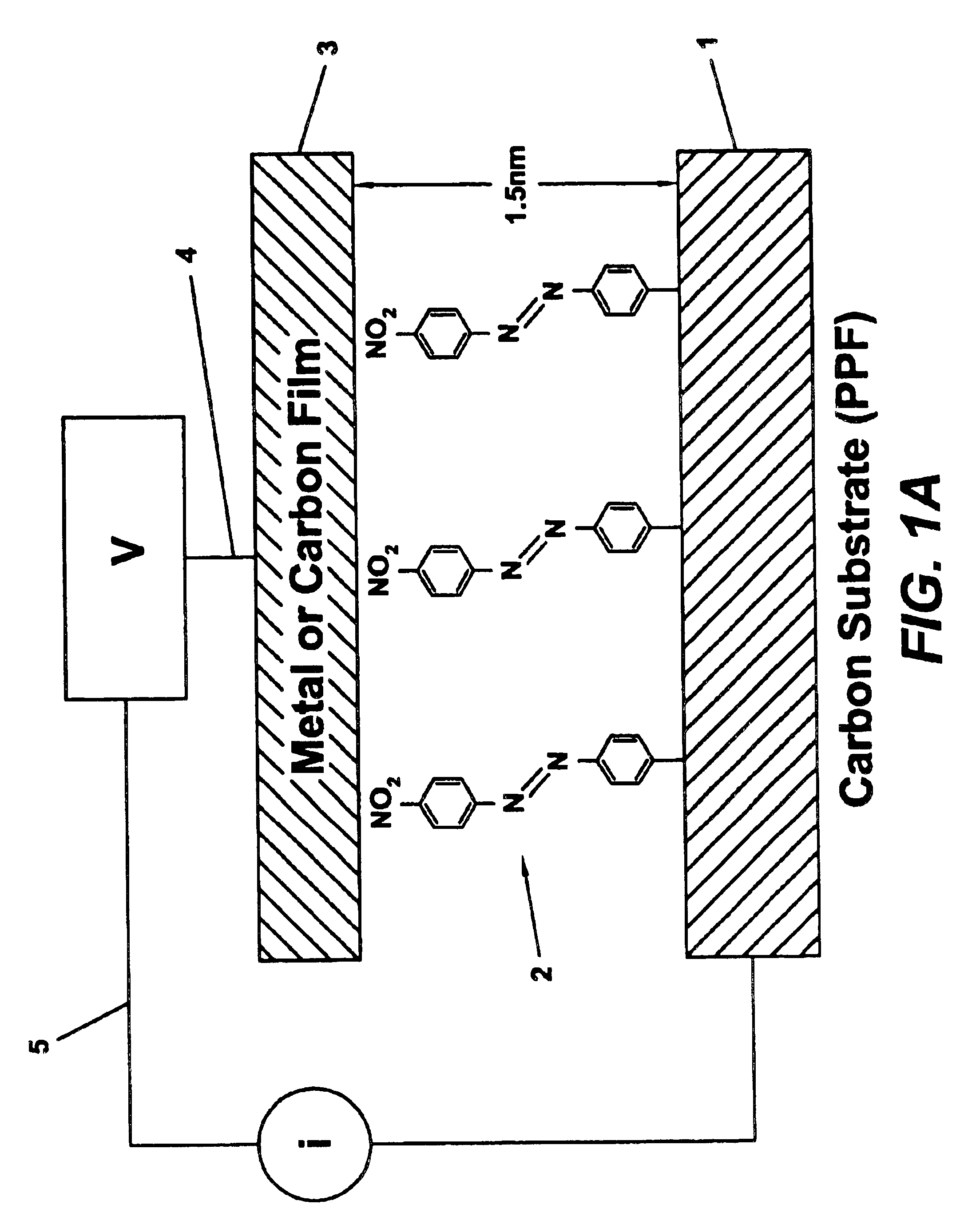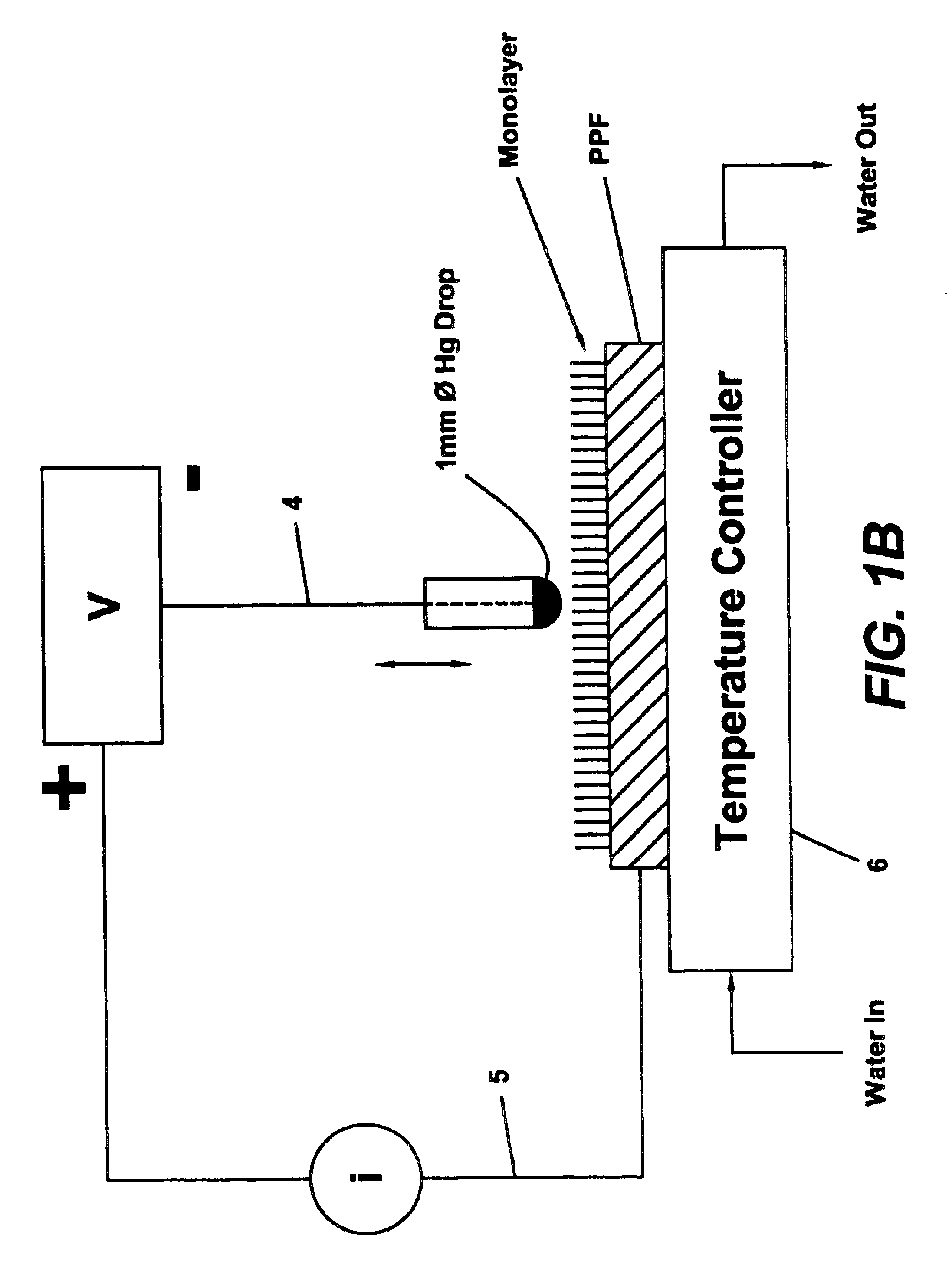Chemical monolayer memory device
a memory device and monolayer technology, applied in the manufacture of electrode systems, record information storage, optical radiation measurement, etc., to achieve the effect of enhancing the efficiency of electron emission
- Summary
- Abstract
- Description
- Claims
- Application Information
AI Technical Summary
Benefits of technology
Problems solved by technology
Method used
Image
Examples
Embodiment Construction
)
In accordance with the foregoing summary, the following presents a detailed description of the preferred embodiment of the invention that is currently considered to be the best mode.
FIG. 1 shows a schematic of a microelectronic junction in accordance with one embodiment of the present invention. FIG. 1 shows a first conductive member 1 or substrate such as a carbon pyrolyzed photoresist film (“PPF”). To this first conductive member 1 is attached a single layer of a plurality of nitroazobenzene molecules (the “chemical monolayer”), covalently bonded to the carbon PPF. The chemical monolayer 2 is disposed between the first conductive member 1 and the second conductive member 3 (i.e. a liquid such as a mercury drop in a device shown in FIG. 1A), with a layer thickness as small as about 1.5 nm. Covalent bonding between the PPF film and the carbon leads to strong, electronic coupling between the molecular monolayer and the carbon PPF. In a finished device, the second conductive member 3...
PUM
 Login to View More
Login to View More Abstract
Description
Claims
Application Information
 Login to View More
Login to View More - R&D
- Intellectual Property
- Life Sciences
- Materials
- Tech Scout
- Unparalleled Data Quality
- Higher Quality Content
- 60% Fewer Hallucinations
Browse by: Latest US Patents, China's latest patents, Technical Efficacy Thesaurus, Application Domain, Technology Topic, Popular Technical Reports.
© 2025 PatSnap. All rights reserved.Legal|Privacy policy|Modern Slavery Act Transparency Statement|Sitemap|About US| Contact US: help@patsnap.com



